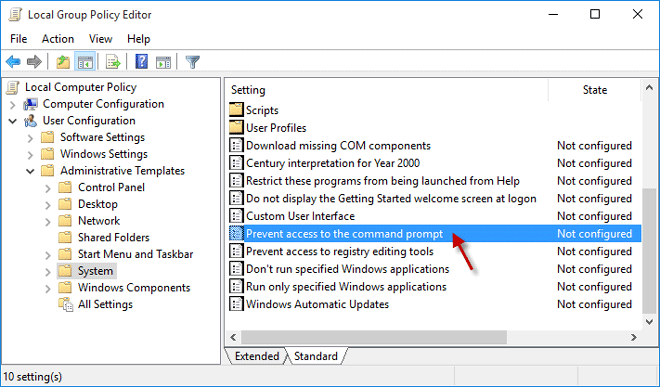

If you ever want to enable Command Prompt, go through the above process again but select “Not Configured” or “Disabled” radio option in step 4. Close the Group Policy Editor and reboot Windows to make the changes take effect.Īfter rebooting, no user can access the Command Prompt or run the CMD or BAT scripts depending on your configuration. Click “Apply” and “Ok” buttons to save changes.Ħ. If you want to restrict users from running any kind of CMD or BAT file, select “Yes” from the drop-down menu under the “Options” section.ĥ.

As soon as you double-click, a policy properties window will open. On the right panel, find and double-click on the “Prevent access to the Command Prompt” policy.Ĥ. User Configuration → Administrative Templates → Systemģ. After opening the group policy editor, go to the following folder on the left panel. First, open the Start Menu, search for “Edit Group Policy’ and click on the search result to open the Group Policy Editor.Ģ. All you have to do is select a policy and you are good to go.ġ. Group Policy Editor provides a clean way to disable both Command Prompt and command-line scripts like BAT and CMD.
#Disable command prompt windows 10 windows 10
If you are using Windows 10 Pro or Enterprise edition, follow the first method. The first method is via the Group Policy Editor and the second is to use the Registry Editor. Just like for many things in Windows, there are two ways you can follow to restrict Command Prompt. So, without further ado, let me show you can disable the Command Prompt and Command Prompt script execution in Windows 10, 7, and 8. So, if you are sure you don’t need the Command Prompt or if you want to restrict other users from accessing the Command Prompt, Windows has a hidden way to disable Command Prompt. That being said, Command Prompt is not for everyone and most seldom use it.


 0 kommentar(er)
0 kommentar(er)
